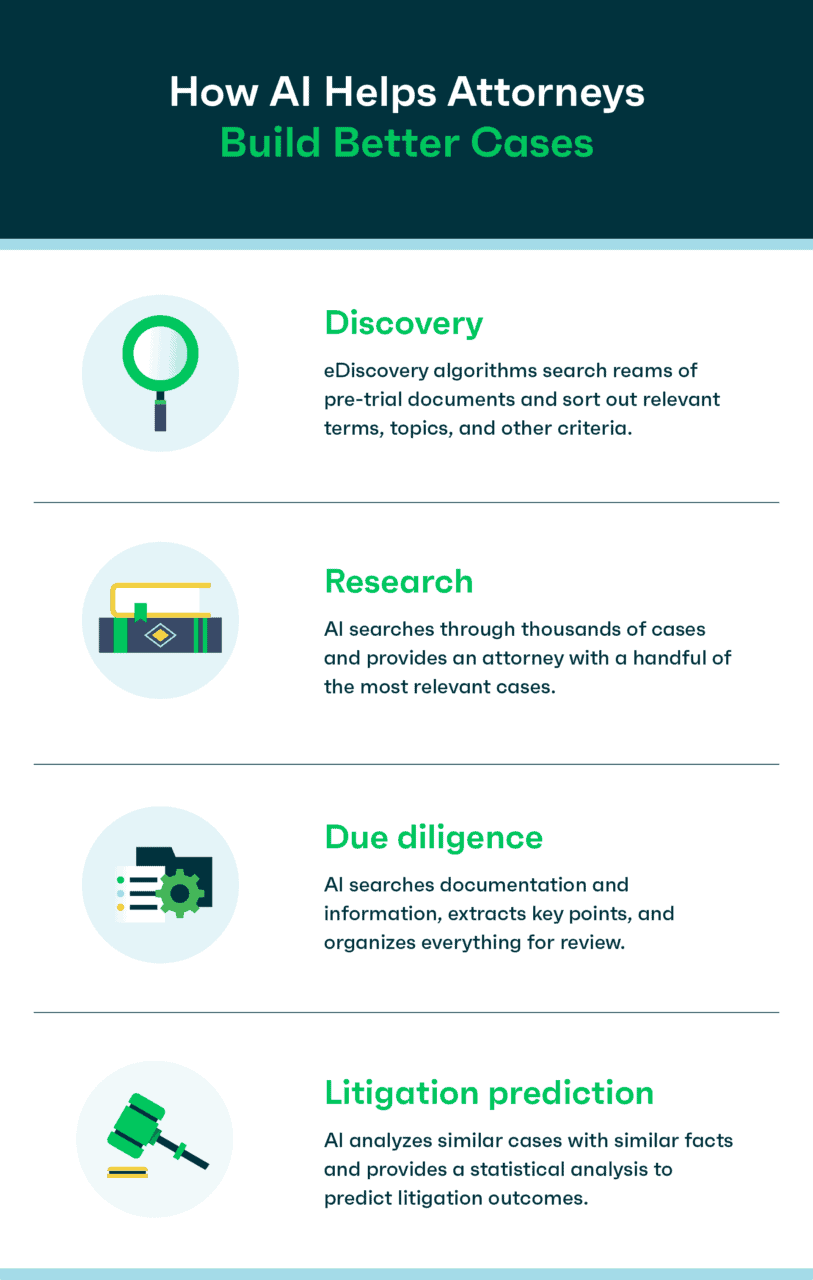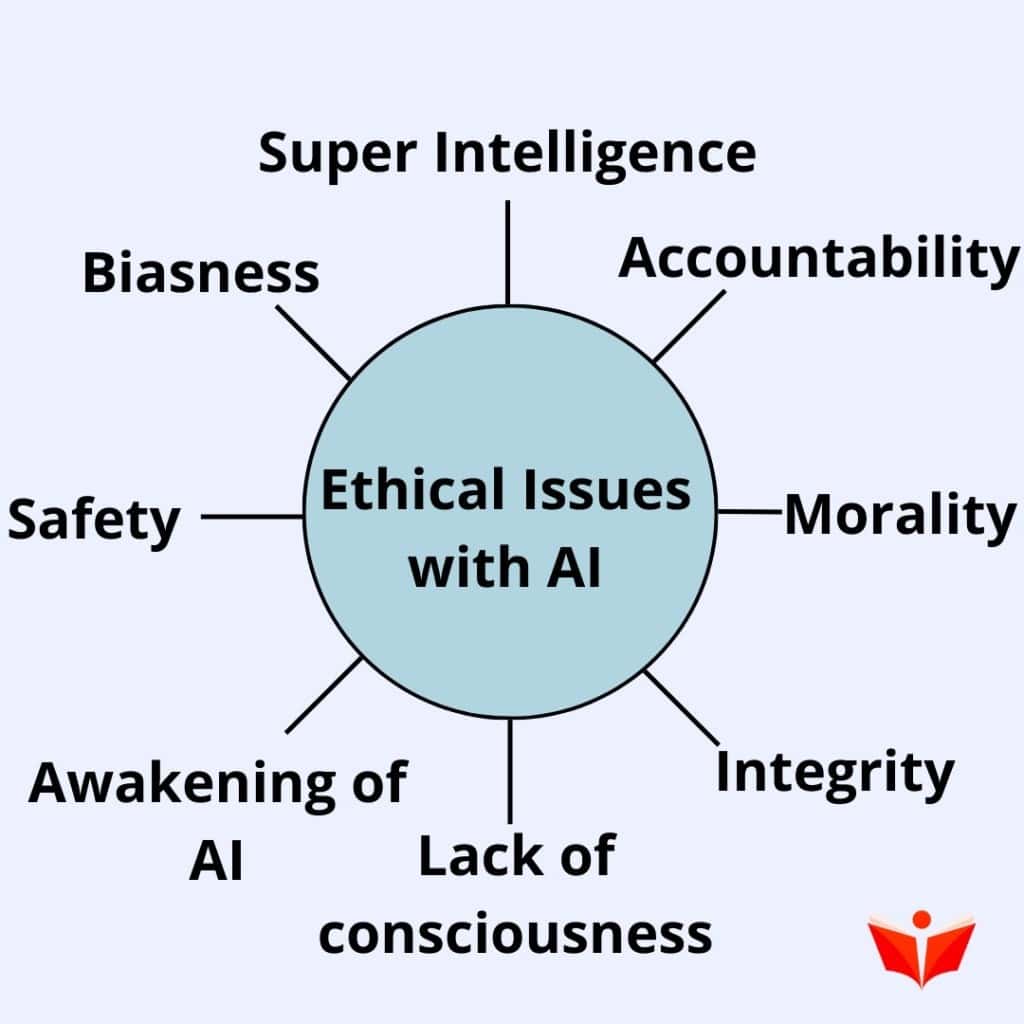In the past decade, Artificial Intelligence (AI) and Machine Learning (ML) technologies have found their way into almost every industry and sector. Essentially, AI is the capability of a machine or computer to mimic human intelligence. ML, on the other hand, is a subset of AI that enables machines to learn from data and improve their performance over time.
From healthcare and home security to self-driving cars to digital media, revolutionary technologies have made a substantial impact in every industry. And now, it is also bringing numerous radical changes in the field of law.
An increasing number of legal professionals are leveraging the power of AI and ML to streamline processes, automate pedestrian tasks, and even enhance research capabilities. These technologies can efficiently analyze vast amounts of legal data to help lawyers reveal patterns and uncover valuable insights. In fact, several AI-powered tools can also assist in contract analysis and predicting case outcomes. However, along with the benefits, the use of AI and ML in the legal domain presents several unique legal implications that must be carefully addressed. This blog delves into the legal challenges of AI and machine learning that you must know to ensure legal transparency and justice.
Understanding AI and Machine Learning in Legal System
In the legal domain, AI and ML are used in various applications. The aim is to bring uniformity and transparency to the judicial system and augment the standard of advocacy.
Let’s look at some of the most common applications of AI and ML in the legal system:

Legal research: One prominent area where AI can reduce the pressure on lawyers is legal research. A plethora of AI-enabled tools have emerged that can quickly and efficiently analyze large amounts of legal data and helps lawyers extract relevant legal laws and statutes. These tools use Natural Language Processing (NLP) techniques to decipher legal texts and retrieve important information, thereby enhancing the efficiency of legal research.
Document review and contract analysis: Law firms have to go through hundreds of legal documents that require a lot of time and patience. But with AI tools, they can automate the process and streamline contract review drastically. These tools help to identify controversial clauses or flag potential risks and inconsistencies and even suggest adjustments.
Predicting case outcomes: Many reports suggest that AI tools can predict court decisions much better than humans as these predictions are based on hundreds of years of court data analytics. The tools can use ML algorithms to assess the facts and check whether they matched any of the past cases and ultimately predict the outcome of future cases.
Key Considerations for AI and Machine Learning Adoption in the Legal Industry
Despite all these benefits of AI and ML in the legal industry, their integration also presents many AI legal implications. Therefore, it is important to consider some key factors before embracing these technologies in your legal setup.
·Data privacy
This is a huge consideration that must be kept in mind before you adopt AI and ML in the legal industry. Both these technologies rely on huge volumes of data for training and analysis. And the legal profession involves safely handling each client’s private and confidential information.
Therefore, law firms need to ensure complete compliance with robust data security and protection regulations to safeguard the integrity of the data being processed. This will make sure the client’s data is properly secured.
·Transparency of AI algorithms
Many times, understanding and explaining the logic behind the decision-making process of AI systems can be hard. This can result in serious issues, especially in legal contexts. Comprehending how decisions are reached and then being able to explain them to judges or clients is key to maintaining transparency and trust.
·Ethical use of AI
When it comes to using AI in the legal industry, there are many ethical aspects to consider. For instance, law firms must ensure that the algorithms being used are not biased. This is important as biased algorithmic decision-making can lead to biased outcomes or discriminatory practices. The technologies must be used in a way that preserves professional ethics and accountability.
·Quality and reliability of data
The accuracy and reliability of AI and ML-based systems largely rely on the quality and variety of datasets used for training. For instance, if the data set used were biased or unrepresentative, it could seriously jeopardize the performance and integrity of AI models.
So, law firms must ensure that their AI algorithms are regularly fed with accurate and updated information to ensure the best outcomes.
·Legal compliance
The legal industry is subject to an extensive range of laws, standards, and protocols that govern its operations. So before adopting AI and ML technologies, legal professionals must ensure that their use complies with these legal laws and guidelines.
They must carefully understand emerging laws related to IP, data security, and liability that are specific to AI and ML technologies. Failure to do so may lead to legal penalties and reputational damage.These are some of the key considerations that law firms must keep in mind before embracing AI and ML. This will help them successfully navigate the challenges associated with the AI legal system and ultimately improve the efficiency of legal practice.
AI and Machine Learning in Law: Legal Implications and Challenges
Now let us look at the most prominent legal implications of using AI and ML in the legal industry. Understanding these implications is the key to addressing them and bringing significant advancements and opportunities for efficiency in the field of law.
1. Liability and accountability
One of the greatest implications of AI and ML in the legal scenario is establishing accountability. The AI systems of today are becoming increasingly autonomous. This means that they operate with limited human intervention. Thus, it becomes tough to attribute liability and accountability when any error or accident occurs.
Let’s understand this with an example.
Say a law firm develops an AI-based chatbot to help its clients with basic legal information. This chatbot analyzes client queries, extracts relevant legal data from a knowledge database, and provides adequate responses.
Now imagine a situation that arises where the client seeks some legal advice from a chatbot regarding a truck clash they are involved in. Owing to some glitch in the chatbot’s programming or a fault in the training data, the chatbot provides inaccurate or misleading advice that damages the client’s case.
So, who will be held accountable in this scenario? Potential parties that may be deemed liable include the developers, deployers, data providers, or even the users, in case they provided incomplete or inaccurate information to the chatbot. However, determining the precise allocation of responsibility in this scenario is very difficult.
Therefore, it is important to develop legal frameworks that resolve this issue by allocating responsibility in AL and ML contexts. One of the best ways is to develop a framework of shared responsibility, where multiple stakeholders, such as developers, deployers, and even users may bear some degree of liability.
2. Bias and fairness
The presence of bias in AL and ML systems is another massive concern when it comes to ensuring fair and equitable legal outcomes. Bias in AI systems can occur due to many reasons, such as faulty algorithms, biased training data, or any human assumptions made during system development.
When AI and ML systems are trained on historical data, they grasp patterns or relationships that are present in that particular data set. Thus, if there are any disparities or favoritism in the data, the AI system will unintentionally perpetuate those in its decision-making process. And this can lead to unfair outcomes for certain groups or individuals based on their gender, race, or socio-economic status.

An example of this was demonstrated by COMPAS (Correctional Offender Management Profiling for Alternative Sanctions) algorithm. This algorithm was used by judges to predict if the accused should be released or not on bail pending trial. COMPAS was found to be biased against African-Americans as compared to white defendants.
Biases in algorithms is a serious implication of using AI in the legal industry. It is important to deploy bias mitigation techniques to promote fairness and equal treatment.
3. Privacy and Data Protection
Data protection and privacy is another serious implication of using AI and ML in the legal industry. The legal industry deals with private and confidential client information such as case details, financial status, and other legal documents. When feeding this confidential data to AI systems, law firms must employ robust security measures.
Additionally, AI and ML systems rely on data storage and processing, which makes them a potential target for cybercrimes. Thus, there is a massive risk of data theft, unsanctioned user access, and data breach of sensitive information.
Equifax, one of the leading consumer credit reporting companies in the US witnessed a severe data breach that revealed the personal sensitive information of almost 143 million customers. The breach occurred due to a slight vulnerability in the company’s official website that enabled hackers to gain unauthorized access to critical data.
Addressing data protection and privacy implications is important to preserve the integrity of sensitive information. Often, the process involves a cohesive approach that combines using robust security measures, compliance with data protection guidelines, and implementing responsible data management practices.
4. Regulations and governance
As the adoption of AI and ML technologies gain momentum, there is a mounting need for strong regulatory frameworks to govern their development and use. Without clear guidelines and standards established for these technologies, there is a greater risk of legal uncertainties and potential risks. This is where AI for Regulatory Compliance can play a significant role, helping legal professionals navigate complex compliance requirements more effectively
One of the foremost challenges in regulating AI and ML technologies is to strike a balance between facilitating innovation and safeguarding individuals and society. While promoting innovation is very important, it is equally imperative to protect humans from discrimination, biased decision-making, and privacy breaches.
Therefore, regulatory frameworks must be designed to nurture responsible innovation and mitigate the common pitfalls associated with AI and ML systems.
Conclusion
Both Artificial Intelligence software and Machine Learning technologies are continually advancing and becoming more prevalent. Indubitably, the two offer numerous benefits such as improved efficiency, better access to information, and informed decision-making. However, at the same time, they also pose many unique legal challenges which must be adequately addressed.
Collaboration between legal professionals, technology developers, and policymakers can help to bring down the negative implications of these technologies in the legal industry. In addition, shaping a regulatory framework that governs the use of AI technology in the legal industry can also ensure their fair and accountable use.
Author’s bio:

Archi, a Digital Marketing Manager at alttxt.com, possesses a wealth of expertise in crafting persuasive and impactful content for SaaS businesses. With an impressive track record spanning three years, she has consistently excelled in devising content strategies that deeply connect with the intended audience, resulting in increased website traffic and a steady flow of leads.





